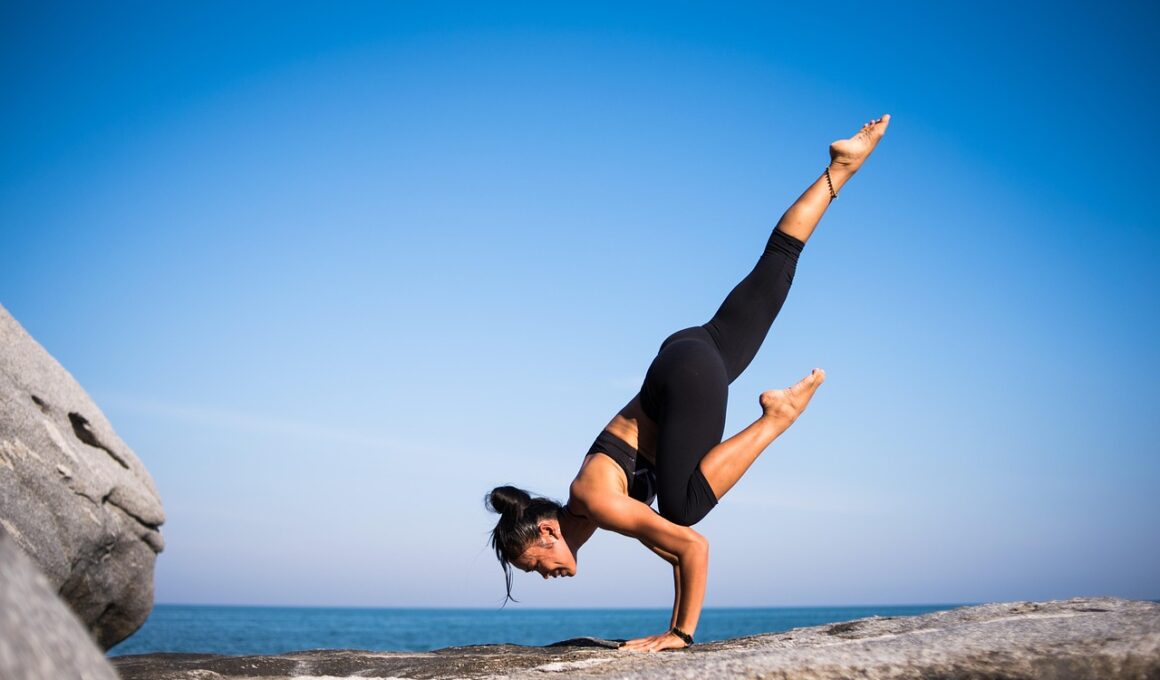Coordination and Balance: Key Elements in Motor Control
Coordination and balance form essential components of motor control, vital for performing various physical activities. These elements enable individuals to execute movements smoothly and accurately. When engaging in tasks such as walking, running, or playing sports, the ability to maintain balance ensures effective and efficient movement. Coordination involves synchronizing multiple body parts to achieve desired outcomes. Developing coordination is essential not just for athletes but also for individuals in daily life, providing a foundation for a more active lifestyle. It plays a significant role in rehabilitation programs, helping patients regain their motor skills after injury. Balance, on the other hand, allows individuals to maintain stability, particularly during dynamic movements. Training these skills improves overall athletic performance and reduces the risk of injuries. Balance exercises, such as yoga and tai chi, have gained popularity as effective ways to enhance this important skill. In addition, understanding how balance and coordination work together leads to better training methods. This understanding can directly impact performance in various sports, making it a focus for coaches and athletes alike. Integrating these skills into training regimens not only benefits competitive athletes but also promotes lifelong health and wellness.
Motor control, a critical area within exercise science, encompasses various systems of the body designed to facilitate and regulate movement. Central to motor control are the concepts of coordination and balance. These two elements work together and contribute to an individual’s ability to perform tasks smoothly. Coordination refers to the ability to use different parts of the body together effectively, while balance enables individuals to maintain stability during these movements. Effective training programs can enhance these skills and improve overall physical performance. Furthermore, the significance of balance becomes evident when analyzing how individuals navigate different environments. Maintaining equilibrium is essential during both static and dynamic activities. Specific exercises focusing on balance can significantly enhance stability, thus reducing the risk of falls, especially among older populations. Research shows that training aimed at improving these motor control components can lead to increased functional capabilities. Moreover, learning how the body reacts under varying conditions is crucial for long-term athletic success. The relationship between these elements and athletic performance is well-documented. Athletes who train their coordination and balance often enhance their efficiency and effectiveness during competition.
The Role of Sensory Input in Motor Control
Sensory input plays a vital role in motor control, significantly influencing coordination and balance. Through sensory feedback from visual, vestibular, and proprioceptive systems, the brain receives information essential for adjusting movements. The brain integrates this information to coordinate effective responses to external stimuli. For example, visual input helps detect obstacles while walking, allowing adjustments in movement patterns. Additionally, the vestibular system contributes to balance by providing information about head position and motion. Proper functioning of these sensory systems is crucial for performing tasks that require precise motor control. Any disruptions in sensory processing can lead to balance issues and coordination deficits, increasing the risk of falls. Functional training that incorporates sensory elements can enhance motor control, promoting balance and spatial awareness. Activities such as proprioceptive training not only strengthen muscles but also sharpen the body’s balance capabilities. This approach is especially beneficial in rehabilitation settings, enabling patients to regain their lost motion and stability. As individuals progress, diversifying training to challenge the sensory system can further improve motor skills. Fostering an understanding of how sensory input influences motor control provides valuable insights for developing effective training programs.
Motor learning refers to the process of acquiring new skills and refining existing abilities through practice and experience. Understanding how motor learning occurs is essential for enhancing coordination and balance. Various theories explain how individuals learn and improve their motor skills. For instance, the closed-loop theory emphasizes feedback’s role in refining movements, whereby continuous adjustments are made based on sensory input. In contrast, the open-loop theory focuses on pre-programmed movements that do not rely on feedback during execution. Both theories highlight the importance of practice in achieving high levels of performance. Deepening one’s understanding of motor learning allows trainers and athletes to implement effective training practices. Engaging in deliberate practice, where individuals focus on specific elements of their movements, can lead to significant improvements over time. Consistency and repetition are crucial variables that help enhance motor skills and build effective movement patterns. Athletes can benefit greatly from exploring various learning styles, as some may respond better to different coaching methods. Overall, grasping motor learning principles informs the design of training regimens aimed at developing coordination and balance, ultimately resulting in improved performance across various sports and physical activities.
Balance Training Methods
Effective balance training methods play a crucial role in improving motor control, specifically concerning coordination and stability. These methods encompass various exercises designed to enhance an individual’s ability to maintain balance, regardless of the conditions faced. Simple activities such as standing on one leg or performing heel-to-toe walking serve as excellent starting points for training. As individuals progress, more complex movements including balance boards or stability balls increase challenges and adaptability. Incorporating dynamic balance exercises that involve movement, such as lunges or agility drills, can significantly boost coordination skills. It is essential to tailor balance training based on age and ability level; older adults may benefit from exercises focusing on stability, while athletes may need more dynamic challenges. Moreover, technology such as wobble boards or balance trainers can guide balanced workouts. Group classes focusing on balance, such as dance or martial arts, can create an engaging atmosphere. The social aspect of group training enhances motivation, making it easier for individuals to stick with their routines. Ultimately, consistently integrating various training methods fosters improvements in both balance and coordination, promoting athletic performance and reducing injury risks.
Injury prevention is a critical aspect of motor control, with coordination and balance as key components in reducing the likelihood of injuries. Well-developed motor skills contribute to a body’s ability to adapt and respond to unexpected situations, minimizing the risk of falls and accidents. Implementing training focused on enhancing coordination and balance can significantly decrease injury rates in various populations, including athletes and elderly individuals. Conditioning programs that prioritize these skills should include functional movements tailored to the needs of the specific group. For athletes, exercises that replicate sport-specific demands can help improve performance while simultaneously acting as a preventive measure against injuries. Engaging in regular balance and coordination training reinforces neural pathways, fostering the body’s ability to respond intuitively to disturbances. Injury prevention programs can benefit from periodic assessments that monitor improvements in balance and coordination, ensuring continued progress. Adding balance training to rehabilitation protocols can also assist in the recovery process after an injury. Overall, focusing on these essential components of motor control supports improved physical abilities while effectively mitigating injury risks, allowing individuals to thrive in their chosen activities.
Conclusion: The Importance of Coordination and Balance
Coordination and balance are indispensable elements of motor control that significantly affect an individual’s physical performance and safety. By understanding and training these components, individuals can enhance their overall motor skills and reduce injury risks. Programs that incorporate targeted exercises to improve these skills can benefit various populations, from children developing their foundational abilities to older adults maintaining their independence. Emphasizing the interconnection of coordination and balance in any training regimen creates an environment where an individual’s abilities can thrive. Pursuing a routine that develops motor control ensures longevity of performance across several activities, promoting better health and wellness. Enhanced coordination and balance foster confidence in physical activities which can lead to increased participation in sports and recreational activities. As the understanding of motor control deepens, so will the development of innovative training programs aimed at advancing these skills. Professionals in exercise science and coaching should continuously strive to integrate balance and coordination training into various assessment tools and intervention strategies. Focusing on these critical components ultimately aligns with the broader goal of enhancing physical performance while improving quality of life.
This paragraph will provide an additional segue into the effects of coordination and balance on overall physical abilities. Every athlete and individual can benefit from understanding how these elements function together, thus leading to enhanced performance and physical well-being. A strong emphasis on coordination and balance can create pathways for better performance in various sports and activities, showcasing the tenacity of practice and cognitive understanding. Professional trainers and physical therapists should emphasize the importance of these skills during sessions, as they can make a remarkable difference in an individual’s journey toward recovery or improvement in performance. By incorporating exercises focused specifically on these elements, individuals will not only improve their capabilities but can also effectively minimize the risk of injuries that can hinder physical activity longevity. Thereby, dedication to improving coordination and balance becomes instrumental not just in sports but in everyday life, highlighting the importance of a comprehensive approach. Continued research and emphasis on these skills within the broader field of exercise science will yield better outcomes for athletes and the general population alike, paving the way for a more active and balanced future.


